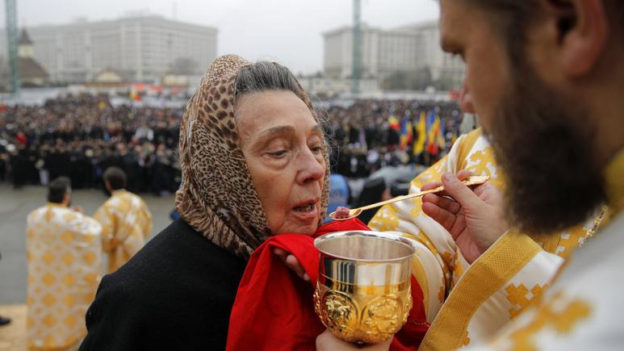By Maria Nita
The Covid 19 social distance posed real challenges for the largely rural, traditional and sensorial Orthodox Church in Romania – where kissing icons and other embodied rituals could not so easily find a virtual counterpart. In a recent Pew survey, Romania scored 1st among 34 European Countries as the country with the highest religiosity – yet we have to look beyond religious commitment if we are to dig deeper into the reasons why Romanian priests seemed to ignore official advice and gave communion in the midst of the pandemic. A recent euronews article suggests that priests had not had an order from the Patriarch – which makes an interesting point about religious authority in Eastern Europe.
High religiosity aside, as a British-Romanian academic I can see the ‘new Romania’ of the last couple of decades embracing European freedoms and progressive values and being increasingly at odds with the highly conservative Romanian Orthodox Church. Yet I can also see Orthodox churches preserving their special status in both town and country, much like the candle-lit golden oases in the grey Communist Romania of my childhood.
When Ninian Smart, the British scholar of religion, asked a Romanian informant in the 1970s whether the Orthodox Church had ‘a dialogue’ with the Communist Party, which might help it thrive at the side of ‘an ideologically hostile regime’ – the retort captured the dry taste of Romanian humour: ‘Why should we have dialogue if we see each other every day?’ The Church maintained its independence from the Communist Party through silent acts of resistance. Clearly, new survival and adaptive mechanisms are now badly needed.

